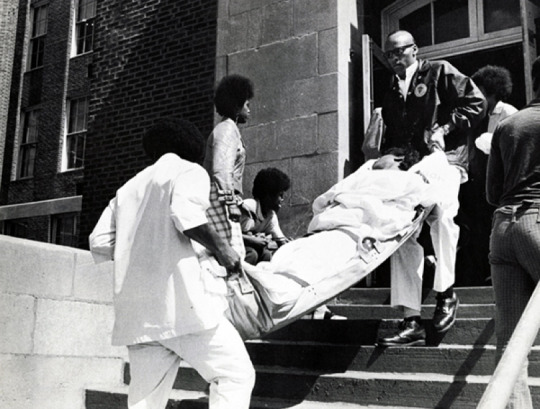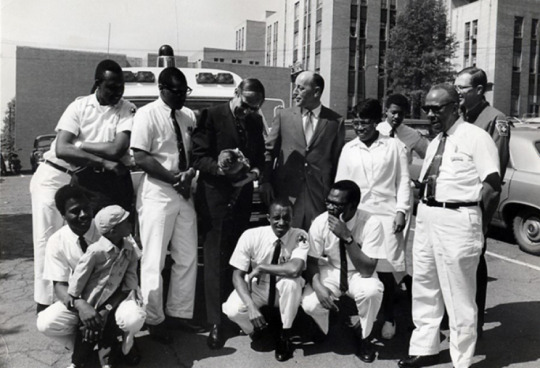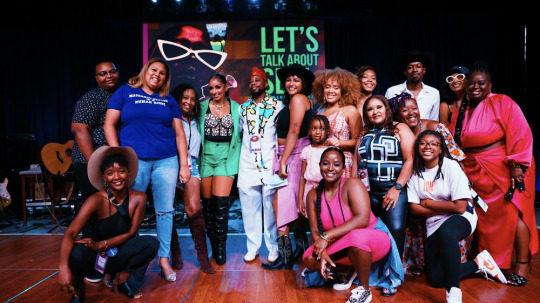#HRH-CallingOnHeroesPast
Explore tagged Tumblr posts
Text
youtube

“In 1967, Pittsburgh's inner city produced America’s first EMT service. Comprised solely of Black men and women recruited from the city’s Hill District neighborhood, the paramedics of Freedom House Ambulance became trailblazers in providing pre-hospital and CPR care. Freedom House was initially conceived to respond to the needs of Pittsburgh’s African American community who often times, couldn’t rely on police and fire departments during an emergency. Their ground breaking work became the basis for all paramedics training in the country. However, despite its success - racism and power dynamics in Pittsburgh shut down Freedom House in 1975, leaving its legacy almost lost to history. For more information visit https://www.wqed.org/freedomhouse.”

“By 1972, Freedom House employed 35 crew members, received 7,000 calls a year, and its leaders had established the National Registry of Emergency Medical Technicians to formalize the field. The crew pioneered several medical developments and technologies, including the introduction of medical physicians to ambulance work, allowing medics to transmit EKGs, using air casts to stabilize injured bones and joints, and even administering Narcan to overdose patients.”
“Unfortunately, the ambulance service was viewed with concern by City Hall. White neighborhoods grew indignant that Hill District residents were receiving better care than them. Rather than allow Freedom House to expand service to other neighborhoods, in 1975 the City of Pittsburgh cut Freedom House’s funding and subsumed its personnel and operations into a newly established citywide EMS service.
In a follow-up interview, Mr. Moon described what happened next. “Despite a written agreement that our previous training would be accepted, it was not. As a result of constant belittling and additional needless class sessions, a great number of Freedom House personnel were systematically eliminated from employment with Pittsburgh E.M.S. When you eliminate the history makers, you essentially eliminate that part of history.””
From: https://www.forbes.com/sites/arthurkellermann/2024/02/08/americas-first-paramedics-were-black-their-achievements-were-overlooked-for-decades/?sh=208a6ff2392e
0 notes
Text
0 notes
Text
youtube
The National Harm Reduction Coalition recognizes the Reproductive Justice movement as foundationally important to the Harm Reduction movement. What parallels to harm reduction concepts do you take away from the video above?
Here is an excerpt from an in-depth article on the concept of Reproductive Justice, written by Loretta Ross in 2017 (free download available here: https://www.researchgate.net/publication/322536609_Reproductive_Justice_as_Intersectional_Feminist_Activism
What is Reproductive Justice? In June 1994, twelve black women working in the reproductive health and rights movement birthed the concept of reproductive justice at a pro-choice conference on health care reform in Chicago. We created “reproductive justice” because we believed that true health care for women needed to include a full range of reproductive health services. While abortion is one primary health issue, we knew that abortion advocacy alone inadequately addressed the intersectional oppressions of white supremacy, misogyny, and neoliberalism. From the perspective of African American women, any health care plan must include coverage for abortions, contraceptives, well-woman preventive care, pre- and postnatal care, fibroids, infertility, cervical and breast cancer, infant and maternal morbidity and mortality, intimate partner violence, HIV/AIDS, and other sexually transmitted infections. In simplest terms, we spliced together the concept of reproductive rights and social justice to coin the neologism, “reproductive justice.”
“The 12 women and their affiliations at the time who became the founding mothers of the concept of reproductive justice were:
Toni M. Bond Chicago Abortion Fund
Reverend Alma Crawford Religious Coalition for Reproductive Choice
Evelyn S. Field National Council of Negro Women
Terri James American Civil Liberties Union of Illinois
Bisola Maringay National Black Women’s Health Project, Chicago Chapter
Cassandra McConnell Planned Parenthood of Greater Cleveland
Cynthia Newbille National Black Women’s Health Project (now Black Women’s Health Imperative)
Loretta J. Ross Center for Democratic Renewal
Elizabeth Terry National Abortion Rights Action League of Pennsylvania
“Able” Mabel Thomas Pro-Choice Resource Center, Inc.
Winnette P. Willis Chicago Abortion Fund
Kim Youngblood National Black Women’s Health Project"

https://www.sistersong.net/
SisterSong is a Reproductive Justice advocacy organization that is fighting for the legal right to bodily autonomy. More information on their advocacy and legal work available on their website (linked above), and on the ACLU website:
WHAT'S AT STAKE
“Georgia physicians, reproductive health care providers, and advocates filed a lawsuit in the Superior Court of Fulton County on June 26, 2022 bringing a state constitutional challenge against H.B. 481, a law banning abortion at approximately six weeks of pregnancy — just two weeks after a person’s first missed period and before many people even know they are pregnant. This lawsuit comes one week after a federal appeals court allowed Georgia’s six-week ban to take effect for the first time since it was passed in 2019, causing an immediate, devastating crisis as clinics were forced to turn away patients in waiting rooms across the state and to cancel many upcoming appointments.”
1 note
·
View note
Text
When we talk about harm reduction, we often reduce it to a public health framework, [one of] reducing risks,” she told the crowd. “That’s harm reduction with a small ‘h-r’. Harm reduction is meeting people where they are but not leaving them there.”
“But Harm Reduction with a capital ‘H’ and ‘R’—this is the movement, one that shifts resources and power to the people who are most vulnerable to structural violence.” She went on to describe its aims as including: building community for and empowering directly impacted people, or “people who are not seen;” disruption; changing narratives; solidarity; and fighting for social justice.
...
Monique supported the underground naloxone acquisition, purchasing supply from Dan Bigg in Chicago. These purchases were primarily funded out of individuals’ pockets. Because Monique had power within her organization, she redirected funds originally intended for research to purchase naloxone. At the time, naloxone was considered drug paraphernalia and possession could be cause for arrest. Eventually she became concerned that distributing naloxone could endanger the staff, the participants, and ultimately the organization. She sought internal approval from the organization’s Board of Directors to continue distributing naloxone. They denied the request, citing lack of information/ evidence about naloxone’s efficacy. She and a board member got to work. They designed a study to demonstrate the efficacy of naloxone and started to build the evidence base. Their research was informal but rigorous and helped lay the foundation for Massachusetts organizations to embrace naloxone.
...
I asked Monique whether things have changed over the past 30 years. Yes and no, she replied. Yes, because HIV is no longer the crisis it was, syringe access programs are more commonplace, paraphernalia laws are less strict, and Good Samaritan Laws and naloxone standing orders are in place. And no because the circumstances underlying drug use are the same and just as virulent. There is not enough investment in basic needs, adequate food, shelter, and education. Without amending these social ills, harm reduction, a mere band aid, cannot truly “work.”
0 notes
Text
youtube
when we “call on heroes past” we are honoring both our transcended and our living ancestry; those who have taken actions in the past that shape our present and inspire our future.
#harmreductionheroes#harmreduction#HRH-MusicAsSelfReflection#HRH-CallingOnHeroesPast#HRH-c.r.e.a.m.#Youtube
0 notes
Text
Great source of photographs documenting the Black Panther Party's survival, mutual aid and sustainability programs.

Panther Free Food Program
Children Prepare Bags of Food for Distribution at the Oakland Collesium at the Black Panther Community Survival Conference, Oakland, California, March 1972


Collection of the Smithsonian National Museum of African American History and Culture, © Stephen Shames
#harmreductionheroes#harmreduction#HRH-Lawyer#HRH-Nurse#HRH-CallingonHeroesPast#Black Panther Party#HRH-BuildingSolidarity
0 notes
Text
youtube
"Food for thought: How your belly controls your brain"
Ruairi Robertson
TEDxFulbrightSantaMonica
"As a nutritionist, microbiologist and neuroscientist, Ruairi Robertson is passionate about the link between our bellies and brains. His research is examining how our intestines and the microbes within them can influence both physical and mental health, and most importantly how our diets influence this relationship. Ruairi has travelled the world researching food, and believes it is the key to global public health. Ruairi is a PhD student in University College Cork in Ireland and current Fulbright Scholar"
#HRH-Detective#HRH-ResearchChallenge#harmreductionheroes#harmreduction#Youtube#HRH-FoodisaDrug#HRH-CallingOnHeroesPast
0 notes